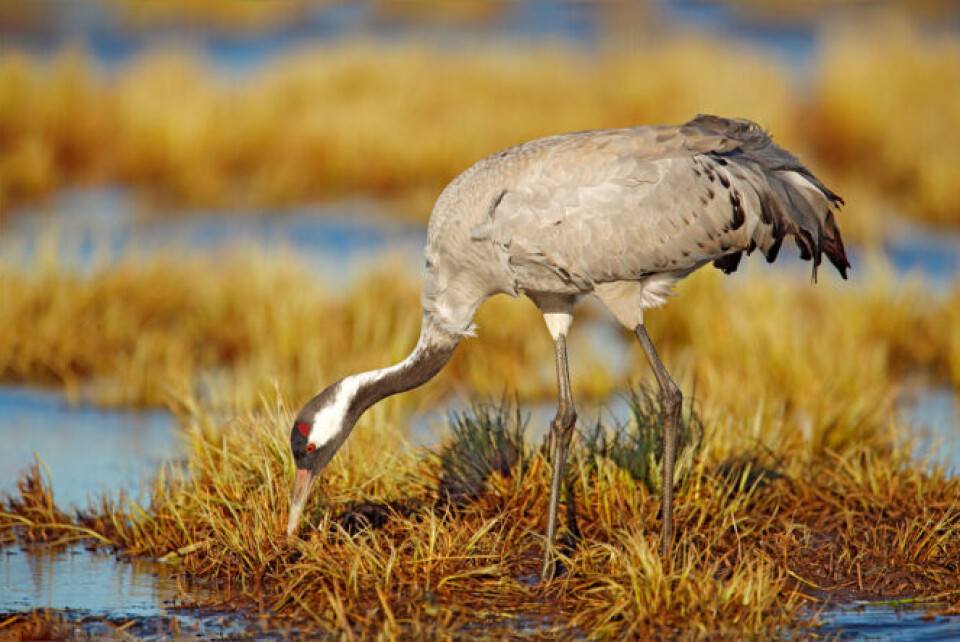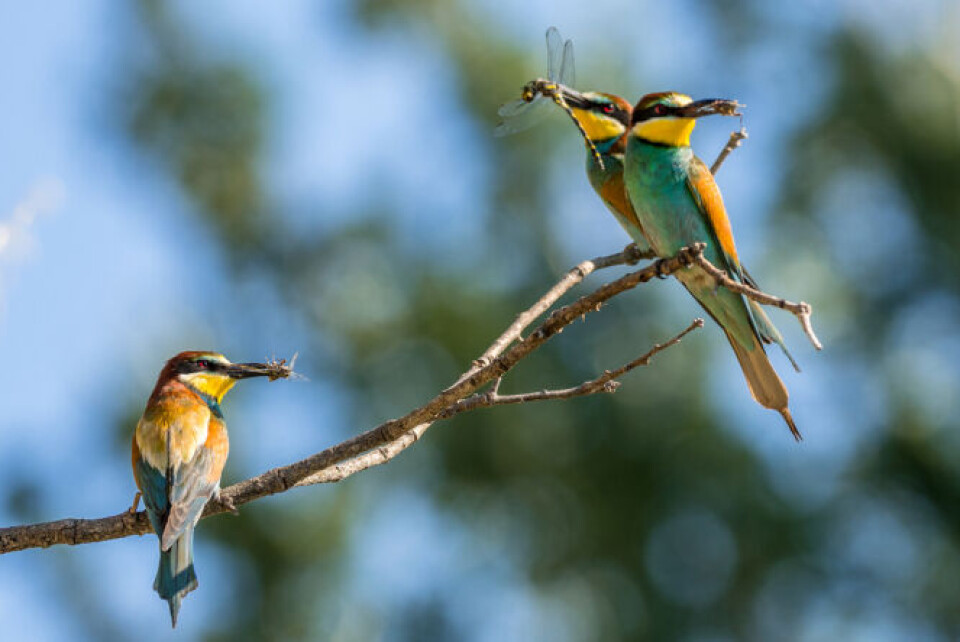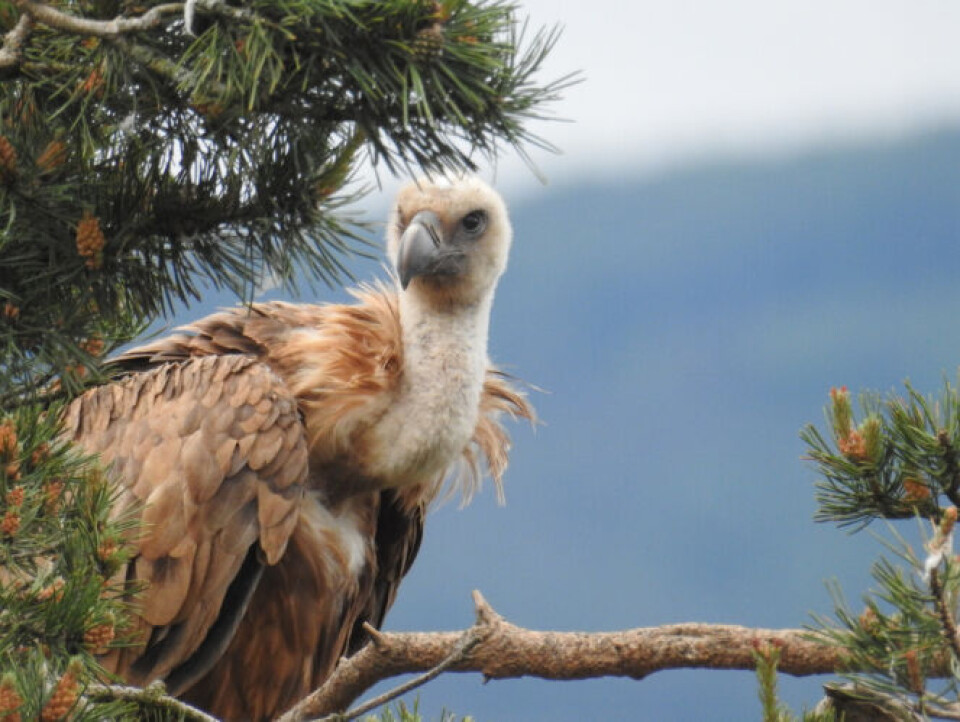-
Duck Cold! Four French phrases to use when it is freezing outside
We remind you of French expressions to use to describe the drop in temperature
-
When and why do we say le moral dans les chaussettes?
We explore this useful expression that describes low spirits
-
The origins and meaning of tirer les marrons du feu
As Christmas approaches, we look at a phrase to describe someone who takes advantage of a situation
Birdwatcher’s guide to France: Nature reserves, parks and trails
Explore the country’s best landscapes for watching pink flamingos, birds of prey or even migrating birds, as well as information centres and exhibitions

Birdwatching is a popular pastime in France and a great excuse to get out into the countryside and explore. Some birds are associated with specific areas like the pink flamingos of the Camargue, and others have been accidentally introduced to the Hexagon like the ring-necked parakeets in the Ile-de-France but all of them are fascinating to watch.
Some people go even further; glider pilots in the Alps and the Pyrenees report vultures flying alongside them, apparently just for the fun of it.
The LPO (Ligue pour la Protection des Oiseaux) is probably the largest bird charity in France, lobbying for bird protection, and leading a particularly vigorous legal fight against killing birds by smearing glue on branches. (Finally illegal in France; the charity fears that as this year’s election approaches, President Macron will bow to pressure and allow the abhorrent practice to continue.)
The LPO has expanded in recent years and now works on behalf of all wildlife, and not just birds. Their website (lpo.fr) is in French only and has lots of information about online courses in ornithology, job vacancies, how to set up a bird refuge on your balcony, and more.
The website www.notre-planete.info has a great map (Sites d’Observation des Oiseaux en France) showing where to look for various species of birds in France. France is also blessed with nature reserves which you can visit and explore.
Hauts-de-France
The Parc de Marquenterre nature reserve in the Baie de Somme is a stop-off point for birds migrating between Scandinavia and Mauritania, and is home to around 300 species of birds of prey, shorebirds and waders.
Throughout the 200-hectare site there are observation points, and guides are available to help identify the birds, making the park ideal for beginners as well as more expert bird watchers. There are three marked trails through the park, lasting between 45 minutes and two hours.
Grand Est
There have been storks in Alsace for centuries. They are symbols of happiness, fidelity, fertility and good luck, and tradition has it that they are responsible for delivering French babies. Due to pollution, hunting and high-tension power cables stork populations dwindled during the second half of the 20th century, but a protection programme launched in 1983 has been very successful and today you can spot their nests on chimneys, rooftops and in trees all over the region.
Storks winter in Africa and return to France in March/April, making Easter a great time to spot them building their nests. They can be seen throughout the region, but the wine village of Eguisheim is especially well-known for its storks. (Storks are mute, but listen carefully and you can hear them clattering their beaks at each other.)
Read more: Storks more abundant in France and spreading to different departments
The Parc de l’Orangerie in Strasbourg includes a centre for breeding and protecting storks where you can see them up close. There is also another breeding centre in Hunawihr, northeast of Colmar.
Still in eastern France, the Lac du Des in Champagne is a great place for spotting cranes. The lake attracts large numbers of common cranes as it is on their migration route (several hundred thousand of them transit France annually) and guides are available to help to spot them. The Tourist Office (lacduder.com) also runs a special ‘petit train’ from Giffaumont-Champaubert every autumn from late October/early November onwards which is equipped with telescopes and has an ornithology guide on board.
Another great attraction is the 61-hectare Ferme aux Grues, established on the site of a traditional farm. They aim to attract and feed up to 6,000 cranes so that they will not eat local famers’ crops. It is managed by the LPO and a team of volunteers, and has a permanent exhibition as well as an observatory and five hides around the property. Entrance is free (see lacduder.com).

Pays de la Loire
The Lac de Grand-Lieu nature reserve south of Nantes (Pays de la Loire) is the second largest bird reserve in France, after the Camargue. Covering nearly 63km2, it is the largest lake in France during the winter, and the second largest after the Lac du Bourget in the summer. Home to around 270 species of waterfowl and migrating birds, the top fifteen most often spotted are illustrated on the tourist office website (lacdegrandlieu.com). Apart from a very few licensed fishing boats, no vessels are allowed on the lake.
The Maison du Lac de Grand-Lieu is a good place to start. The views over the lake are exceptional, and the displays give a good overview of the species living in the bird reserve and where to spot them.
Read more: Diary of a birdwatcher in France: The common buzzard
The Observatoire Ornithologique in Passay has powerful telescopes and staff to inform you about the wildlife on the lake. It is also possible to take a guided tour, to see the birds at closer quarters without disturbing them. In the summer it opens late on Wednesdays so people can watch the sunset.
Centre-Val de Loire
In the Centre region, the Brenne regional park includes around 2,000 lakes and ponds, reed beds, marshes, wetlands and moors, making it a paradise for 1,200 species of flora and 2,300 species of fauna including European pond turtles, purple herons, orchids, black-necked grebes, ducks, Eurasian bitterns and dragonflies.
Signposted trails include the Sentier du Blizon in Rosnay and the Sentier de Beauregard in Saint-Michel-en-Brenne. There are hides in the Chérine Nature Reserve as well as at Foucault lake, Bellebouche lake and Massé lake. The Mer Rouge is the largest lake, but if you visit in summer the Bellebouche lake boasts a watersports centre and a sand beach.
The Ecomusée de la Brenne at the Château Naillac in Le Blanc has a very interesting history of the area, and the Maison de la Nature et de la Réserve in Saint-Michel-en-Brenne has a natural history exhibition. The Maison du Parc in Rosnay also has lots of information as well as tastings of local produce in the summer months.
Auvergne-Rhône-Alpes
The Dombes Nature Reserve is another wetland often nicknamed ‘The Land of the Thousands Lakes’ after the ponds which were excavated in the Middle Ages for breeding fish. Carp are still fished every autumn, and served in the local restaurants.
Lake Vavres is exceptionally good for birding; attracting large numbers of herons; European bee-eaters, hoopoe, marsh harriers, red-backed shrike, and kingfishers. There are also grebes, cranes, storks and ospreys.
The Villare les Dombes Bird Park is the biggest in France, covering around 35 hectares. It is laid out around a central pond, it has more than 3,500 birds from 300 species including parrots, birds of prey, pelicans, herons, and even penguins. Children especially enjoy the pelican pond, and the city of parrots. Open from March to November, the park also offers flying displays and a guided tour on a ‘petit train’.
To spot short-toed eagles, eagle owls, harriers, shrikes, and golden orioles as well as many smaller species, head to Haut-Allier, southeast of Clermont-Ferrand in the Auvergne. The Maison des Oiseaux et de la Nature du Haut Allier in Lavoûte Chilhac (auvergne-centrefrance.com) is open at weekends and organises talks, exhibitions, films and field trips. (Watch out for prickly pear cacti which grow in the area!).

Occitanie
The Tarn Gorge running through Aveyron and Lozère is also great for spotting raptors and vultures, wheeling lazily in the thermal currents rising from the mountains. Extinct in the 19th century, Griffon vultures were reintroduced to the area in the 20th century and there are now around 800 breeding pairs as well as black, Egyptian, and bearded vultures. Griffon vultures can have a wingspan of up to 2.70 metres, allowing them to soar effortlessly through the valleys. Known as nature’s cleaners, vultures do not hunt living prey, they scavenge for what is already dead. The local tourist office has more details. (aubrac-gorgesdutarn.com)
The Teich Ornithological Reserve, southwest of Bordeaux, is open all year round and has ducks and geese a-plenty. The wooded areas, reed beds, and salt marshes border the Arcachon Basin and the mudflats which are exposed at low tide. Thousands of birds from the mudflats take shelter in the reserve at high tide and follow the tide out again to the mud flats every day. See the timetable on the reserve’s website (reserve-ornithologique-du-teich.com) which is in English as well as French.

Read more: Exploring Sigean safari park in southwest France
Guided walks must be reserved online in advance, and are especially worthwhile in the winter when it is possible to observe the birds at dusk. It is also possible to do a weekend course in bird watching. Photography is encouraged, and there are a variety of hides designed to help visitors take amazing images.
The birds are not tame or captive, and are not fed. But they are so used to people being in the hides that they come very close, meaning that even a small 300mm lens will get good results, and sometimes visitors get wonderful shots just with an iPhone or a simple automatic camera. February and March are great months to visit and watch spring migrations. You can hire binoculars at the ticket office.
Provence-Alpes-Côte d'Azur
No bird-spotting tour of France would be complete without a visit to see the famous greater flamingos in the Camargue, which is also home to many other wetland and migrating species including herons and egrets.
It is even possible to spot the sacred ibis, which was introduced into France during the 1970s. The entire delta is a birder’s paradise, but if you want to get closer to a flamingo, the best place is the Parc Ornithologique de Pont de Gau (parcornithologique.com) which is open daily until sundown.
There are nearly three kilometres of trails laid out through the park, all of them wheelchair accessible, and there is plenty of information available to help you identify the species. There are large colonies of herons, passerines, birds of prey, egrets and terns and gulls. In the winter, look out for geese, common cranes, and the rare penduline tit.
There is also a clinic which rescues hundreds of injured birds every year, with the aim of releasing them back into the wild when healed. The park also participates in a national scheme monitoring storks and flamingos.

Related stories:
Diary of a birdwatcher in France: Migration
Diary of a birdwatcher in France: The Egyptian vulture
Diary of a birdwatcher in France: The capture of 33 griffon vultures
























